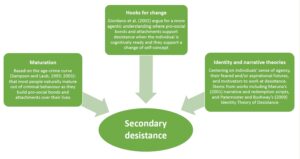My summary of the probation inspectors’ recent thematic report on the work of youth offending teams to protect the public generated considerable interest. So much so, in fact, that I asked Bob Smith the Lead Inspector if he would provide further detail. He has been kind enough to do so in the guest post below.
Introduction
On the 26 October HMI Probation published a thematic report on the public protection work of Youth Offending Teams. The inspection focussed on young people convicted of violent or sexual offences or who were assessed by the YOT as presenting a high risk of serious harm to the public. Headline findings included the high levels of trauma in the lives of those young people and also the extent that social media was featuring in the build up to offences involving violence. Commentary on the report tended to focus on either trauma or social media but rarely both. During fieldwork, it was apparent to inspectors that trauma features extensively in young people’s history and social media extensively in their current lives. The report argues that work with young people will have most impact if it takes account of both these issues.
Background
When, as lead inspector, I began scoping the inspection it became apparent that we already knew a great deal about how YOTs managed their cases that presented the highest risk of harm to the public, mostly violent and sexual offenders. We had data from thousands of case reviews undertaken in our mainstream inspection programme that told us that most YOTs did this work well. There were a small number teams where practice was poor but they were working to improve and those YOTs we had most concern about would be subject to re-inspection. A thematic review of YOT Public Protection work could have been undertaken as a desktop exercise.
Findings
We decided to broaden our lines of enquiry and that is where trauma and social media came into scope. There had been several studies, e.g. Skuse and Matthews paper on the trauma recovery model, focussing on the impact of trauma on young people in custody. We had also seen an increase in social media featuring in the offences examined on inspection. We included in our case reviews questions around trauma and other adverse events in the young person’s life. We also looked for evidence of a social media component to the offence.
Our methodology allowed for a maximum of one and a half hours per case review including an interview with the YOT case manager. We were unsure if we would be able to make significant findings but in fact inspectors were taken aback by what they found. Where there was a reasonably comprehensive assessment of the case (in a small number of cases very little was known by the YOT about the young person’s history) we found evidence of trauma and other adverse events in 80% of cases. The figures are consistent with studies of the custodial population but this group were mostly sentenced to community sentences and their behaviour was less entrenched than those in custody. The findings were based on a brief review of just one agency’s records and the actual incidence of trauma inevitably must have been higher.

An intuitive response
Some of the YOTs had dedicated Child and Adolescent Mental Health Services (CAMHS) workers who were knowledgeable in dealing with trauma however we did not see an explicit trauma informed approach in place in any of the sites visited. We comment in the report that much of the response was intuitive. Practitioners recognised the importance of building the relationship, finding strengths and only working towards structured interventions once the building blocks were in place. Programmes that were too demanding had a high probability of failure. Most of the YOT staff we interviewed had shown appropriate professional curiosity in building a picture of the young person’s history and were responding to their findings. Our recommendation was that trauma informed practice should be further embedded into YOT policy and practice. We include a summary of traumatic/ adverse events we found in Appendix 1 of the report and these summaries really bring to life the huge difficulties these young people face in their lives.
Social media
Social media is clearly a very large part of young people’s lives and we knew that it was increasingly featuring in the build up to an offence or sometimes the actual offence took place across social media. Many of the resources developed for working with young people’s offending behaviour pre-date the social media age. We looked for evidence of social media activity in the build up to the offence and again inspectors were surprised by what they found with around 25% of offences having a social media component. In our inspections, we look for interventions that are relevant to the young person and the offence and we found limited evidence of material relating to social media being used. As with trauma we found staff acting intuitively, sourcing material from the internet and doing their best with what was available. There was little guidance available to staff on appropriate material for social media offences. 
Authorised surveillance
An additional issue that emerged in the inspection was the monitoring of social media output of young people. We were aware that some YOT workers look at young people’s social media output particularly, Facebook posts. The information could be used in several ways. A young person might go missing but continues to post on social media. These posts will give clues to their safety, where they are and who they are with. Alternatively, they may post material that gives clues to their affiliations, beliefs and attitudes that help in the assessment of risk to the public.
Staff were often unclear about whether they could view social media and it appeared that not all social media monitoring undertaken within YOTs was officially sanctioned. We were provided with advice from the Surveillance Commissioner, (who has since merged with the Investigatory Powers Commissioners Office). Their position was that regular monitoring of a young person’s social media, even where the material is open for anyone to view, constitutes surveillance and should be properly authorised. Local Authorities already have procedures for doing this however they are not always applied in work with children and young people
Conclusion
Our case sample in this inspection was focussed on young people who had committed violent or sexual offences and/or were assessed as high risk to the public by YOTs. Practitioners told us that many of lower risk offenders had been diverted away from court and were now more likely to receive an out of court disposal (the subject of a future HMI Probation thematic report). The type of cases we examined in this inspection make up an increasing proportion of the work load of YOTs. The purpose of the review was to identify ways in which outcomes for this very challenging group of young people could be improved. On that basis YOTs are mostly doing a difficult job well but a greater understanding of trauma and social media might improve outcomes where they are difficult to achieve.








